Everything you need to know about maples
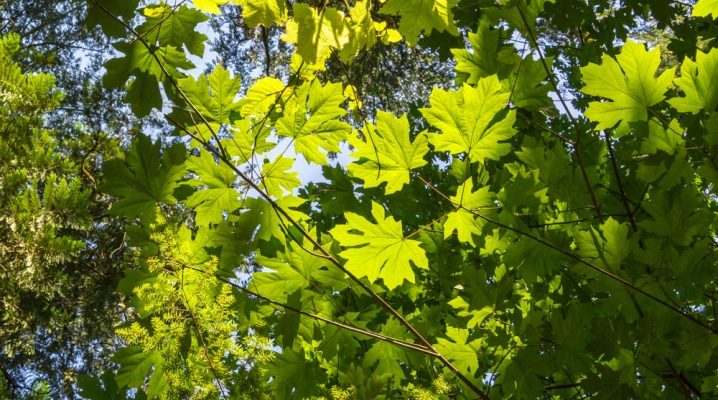
Everything you need to know about maples is presented in the material offered to the attention of readers. It is important for residents of many regions to understand how the leaves of trees, the root system and fruits look, how long a maple lives, how it blooms. The use of wood and interesting facts about it deserves attention.


What it is?
A tree such as maple is usually attributed to the sapinda family, although it used to stand out in a special maple family. In total, from 1400 to 2000 species are referred to the number of sapindic plants. Close botanical relatives:
- rambutan;
- lychee;
- paullinia;
- uignadia;
- soapberry;
- bligia;
- Alektrion.

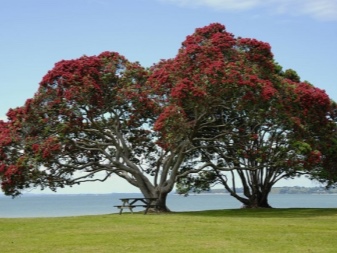
The leaf shape in maples is usually simple, less often complex, with a typically opposite petiole structure.... This leaf looks very beautiful, and in many respects it is thanks to it that the tree looks interesting. Such a plant may differ in particular in the fall. But some maples are evergreen - however, they can only be found in certain regions of Asia and in the Mediterranean. Flowering occurs at the very end of winter or early spring. Remarkably, the maple blooms both before and after the leaves. Its fruits belong to the group of lionfish. During flowering, maple trees actively attract bees. In terms of melliferousness, this plant occupies high positions. Most often, it grows rapidly, if conditions only allow.
The growth rate is highest at a young age. During this period, the annual increase reaches 0.45-0.6 m in height and 0.3-0.4 m in width. But then, of course, this rate decreases noticeably. Vertical growth is actively going up to 25-30 years. Further, the tree will develop mainly in breadth, but after reaching half a century, it ceases to increase its size altogether. To the question of how long maple lives, there is no exact answer yet. The most common estimate is 200-300 years. According to some experts, a tree can even stand up to 500 years. True, such a thesis has not yet been sufficiently argued. In the conditions of Russia, usually maple trees will live for about 100 years, but with careful care, this period can be significantly increased.
Typical for maples, the opposite leaf arrangement means that a pair of leaves is coming from each node. Leaves opposite to each other are usually close in size and geometric shape. According to its characteristics, the maple root system belongs to the rod type.
The different types of this group differ from each other. Their external morphological features are very stable.



Spreading
These plants are often found in the northern hemisphere. You can find them even in the polar regions of Eurasia and North America. But maples also grow in the tropics of Central America, in the tropical regions of southern Asia. True, the tropical belt is inhabited by only a few species. The main diversity still falls on the territory of temperate latitudes.
About 20 different maples are known in Russia. Some of them are listed in the Red Book because of their special rarity. Usually, wild trees gravitate towards mountains and high places. It has been established that maple can grow at altitudes up to 3000 m above sea level. In the Crimea and in various regions of the Caucasus, it is represented by 3 species.
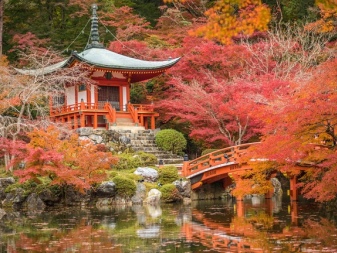

Description of species
Quite a few people, without any conscious intention, come across a dangerous intruding weed - ash-leaved maple. It is often also called the American maple. The species predictably got its name from the region of origin. It is worth noting that in different sources it can be called Californian maple and even ash (the latter is already completely mistaken). Peculiarities:
- deciduous character;
- the highest recorded height is 21 m;
- usual height 12-15 m;
- thickness up to 60 cm (occasionally up to 90 cm);
- thin gray or light brown bark;
- traditional lionfish-type fruit;
- occurs naturally in the forests of the Great Plains of the United States;
- in the past it was actively used in landscaping parks, squares and gardens in the Old World.
Shrub varieties are much less common than trees, and broadleaf (or rather, officially called broadleaf) maples do not exist. But there is a European type, including the holly Globozum. It is also often called ordinary, Norwegian or plane maple. Wild trees of this species can be found in:
- eastern and central regions of foreign Europe;
- western territories of Asia;
- overwhelming majority of localities in the United States.
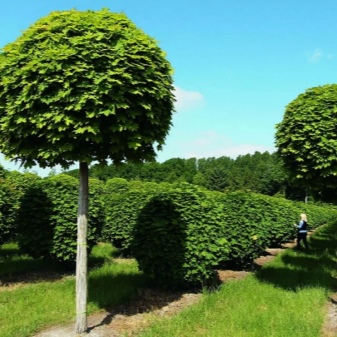

The plant is characterized by a wide rounded crown. The height of trees can reach 20-30 m. The size (cross-section) of the trunk of about 1.5 m is not so rare. The bark, gray with a brown tint, is strewn with cracks, but these cracks are always shallow. The tree will bloom in April and May.
Variegated maple is also a fairly frequent guest. But a number of sources specify that it is more correct to call it a completely ash-leaved variegated tree. Characteristics:
- crown height and cross-section no more than 5 m;
- flowering before leaf formation;
- cold resistance up to 34 degrees;
- prevalence in Asian countries and in the east of Russia;
- unusual color of foliage (by which the species was named);
- the lifespan is from 60 to 100 years.
It is hardly possible to meet plants with white leaves, but specimens with burgundy leaves are quite common. The holly Crimson Centri is a good example of this. Almost all holly varieties are effective in transplanting and are excellent honey plants.... They are also characterized by the formation of a powerful dense crown. Crimson Centri is slim and topped with a very dense top.

Other features of this species:
- short, but densely placed leaves;
- the predominance of forms grafted onto the stem;
- decent decorativeness;
- slow growth;
- the possibility of growing in open areas or in partial shade.
The Leopoldi Fake Maple can also be a very good choice. The height of the trunk, crowned with a wide-pyramidal crown, can be up to 15 m. The foliage will be of a five-lobed type, at the time of dissolution it is yellow and pink, then it turns green, but retains multi-colored specks and splashes. The main part of the tree is covered with ash-gray bark, which is prone to cracking.
Sometimes it is recommended to plant maple Purple King... He has an alternative name - Crimson King. The height of this tree, which has a wide crown, reaches 10 m. It is characterized by pleasant-looking leaves, in the color of which there are both red and yellow colors. The Purple King is best perceived next to trees covered with light or silvery foliage. In nature, Norway maples prefer moist, fertile areas. They like thick layers of loam. Strong moisture, like dry sand, is not to the taste of these trees.
Loam with loamy subsoil can be an attractive option. But there are also other varieties of maples.
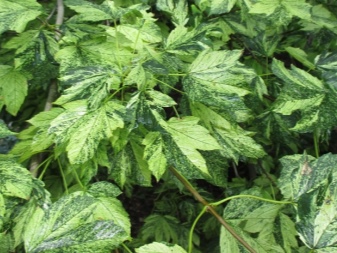

For example, their Far Eastern varieties - of which there are especially many. In the Far East, maple trees grow in mountainous and flat areas, along the banks of rivers and lakes. Among them, the most relevant are:
- Riverside (resistant to cold and unpretentious when growing);
- Green-brown (in addition to the characteristic color of the bark, it has dark green leaves, which acquire a golden yellow color in the cold season);
- Small-leaved (15 m high, with low crown placement);
- Manchurian (with three-lobed foliage developing on red cuttings, with a trunk up to 20 m high).
As for the Pennsylvania maple, these are usually medium-sized deciduous trees. Their height is mainly limited to 5 m.Only a few specimens grow up to 10 m.The cross-section of the trunk is up to 0.2 m.The length of the seeds reaches 2.7 cm, and their width is 1.1 cm. Trees of Canadian or, otherwise, Sugar maple can reach a height of 40 m. A dense crown is typical for them. The trunk is covered with brown or light gray bark. In autumn, the leaves turn red or yellow, even the fruits look beautiful. This species also tolerates cold weather.
The field view is appreciated for endurance. It is believed that this is a bush, but this circumstance does not prevent it from reaching a height of 20 m. You can meet such a maple in deciduous forests and forest-steppes. The name “neklen” or “paklen” is often used. Flowering occurs in April or May, for 10 or 15 days. Tatar maple in the west reaches Austria, in the east - to southwestern Asia, in the south - to Iran. It is occasionally used for decorative purposes. The Tatar maple grows in deciduous forests. You can see it near the ravines and on the river banks.
Despite its slow growth, this species has advantages - resistance to cold weather, the ability to grow in the shade, drought resistance and the ability to grow in saline areas.

Landing
The choice of seedlings is recommended taking into account the appearance of a particular variety. A beautiful hedge is obtained from relatively undersized forms. In rockeries, it is recommended to plant 3-meter trees. 10m and taller options are suitable for large open areas. Other important recommendations:
- do not plant maple where it will shade other plants with its crown;
- use seedlings 2-3 years old;
- prepare fertile soils, increase their productivity by adding compost or humus;
- the depth of the pit should be about 70 cm;
- dense clay should be improved by adding peat and sand;
- in places flooded with soil water, you will need sand and crushed stone drainage with a thickness of at least 20 cm;
- it is advisable to pour 0.1-0.15 kg of mineral fertilizers;
- immediately tie up the planted maples.

Care
Watering
Irrigation should be done once a week. But in practice, the frequency and amount of watering should be selected individually. The better the drainage, the more water should be. You will also have to take into account the amount of precipitation. Watering should be done slowly and thoroughly, and not very intensively and in large quantities, as is usually done.
Excessive moisture is very harmful for maples. Mulching is mandatory. In this case, the area immediately adjacent to the trunk must be free of mulch.


Top dressing
Usually the land is fertilized at planting. If this is not done, the maple tree should be fed next spring. Urea and superphosphate are used for work. Potassium supplements can also be used. For the second time, fertilizers are used in the summer, most often with the preparation "Kemira".

Transfer
Mostly young maple trees are being transplanted. It is almost impossible to transplant adults and old specimens. Pits for planting are prepared in advance, at the right time they are only deepened. The technology is as follows:
- neat linking of branches;
- digging in with a sharply sharpened shovel;
- extraction with a large (at least 12 times greater than the trunk girth) lump;
- transportation over a long distance after wrapping with foil or burlap (this is not necessary for a short distance);
- adding compost or humus;
- landing at the same depth at which the tree grew before transplanting;
- design of a circular roller, eliminating the loss of water during irrigation.

Pruning
It is quite possible for any experienced gardener to properly prune regular and other maple to make it beautiful.... By default, these trees create beautiful natural crowns. Usually only prohibitively long annual shoots have to be pruned. On young trees, the rapidly developing shoots are pinched. Lateral buds give new shoots, which guarantees balance and overall crown density.
It is necessary to get rid of sick and too dry branches in any case. The same applies to the depressed and weakened parts of the plant. The most difficult work is aimed at facilitating air circulation and improving illumination inside the crown. The approach in this case to each plant is individual. It will be imperative to rejuvenate trees at an age, with decorative pruning, you will have to strive to reduce windage and reduce the risk of wind blockage.
It is not so easy to accurately trim old maple to the contour. Even experienced gardeners can make mistakes. Therefore, it is more correct to entrust the pruning of tall large-sized trees to specialists. If you decide to make a trapezoidal hedge, you need to tackle this as early as possible. Important: each variety is processed according to its own special technology. Arborists use motorcycle shears. They are usually powered by a gasoline engine, from the mains. But there are also rechargeable devices. In any case, they are technically complex and must be handled carefully.
This circumstance, as well as the high cost, is another argument in favor of the services of professionals.

Wintering
Whether the tree overwinters at home or in the country, or in the fall it will be possible to enjoy its appearance for the last time, largely depends on the variety. Therefore, it is very important to select only adapted varieties from well-known nurseries. In the early years, the base of the trees is additionally insulated. For this purpose, it is preferable to use spruce branches or thick leaves. Important: if the tree is still frozen, the affected branches should be pruned as soon as possible.
Before the onset of winter, it is necessary to use phosphorus-potassium fertilizers. It is imperative that with them there were no nitrogenous substances. Dwarf plants need to be covered during the entire growth period.
Tall varieties do not give this opportunity. That is why it is so important to choose varieties that meet the climatic requirements of the regions.
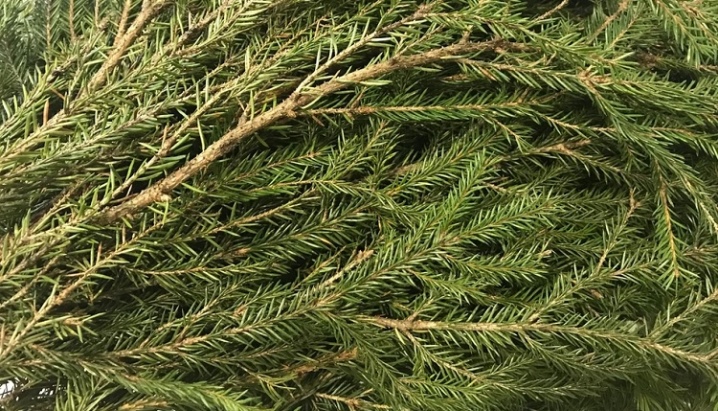
Reproduction methods
The most competent way to plant maple is by cuttings. Passionate gardeners and professionals can try other options, but this is not suitable for those who just want to acquire quality plantings. Seed propagation is tedious and time consuming. Ornamental dwarf trees are mainly propagated by grafting. Cutting is carried out as follows:
- take planting material 25 cm long;
- stimulate root growth;
- planted to a maximum depth of 5 cm;
- thoroughly loosen the landing hole;
- equip drainage;
- make mineral dressing;
- young seedlings are regularly and abundantly watered.

Diseases and pests
Maples often suffer from powdery mildew. You can fight it with the help of the sow thistle infusion. It is possible to eliminate the danger of black spot using foundation or copper sulfate. Onion peel infusion helps from the already developed pathology. Among insects, the danger is the maple weevil, marble beetle, June beetle, and false scale insects.
Additional risk factors are:
- tinder fungi;
- field mice;
- hares.


Application
Maples look very attractive, which allows them to be used in landscape design on any site.... These plants can become both tapeworms and companions of other species. Their minimal whimsicality also testifies in favor of maple plantings. It is advisable to plant a riverine species near natural and artificial reservoirs. It also fits well with Japanese-style gardens.
Due to the properties of maple wood, you can make furniture and interior products from it.This veneer was extremely popular in the middle of the twentieth century. Then his natural color was appreciated. However, soon the popularity of the maple massif began to decline - it was found that it turns yellow over time. Now it is mainly used for:
- finishes of first-class handmade furniture from the inside;
- intarsium;
- solid countertops;
- parquet;
- stairs.
Maple has long been used to make strings and wind instruments. For example, it is regularly used for guitar necks and drum bodies. This wood is still in demand by sculptors and carvers. It can also be used for:
- household products;
- kitchen appliances;
- sports equipment;
- toys.


Procurement and storage
For medicinal purposes, juice, foliage and shoots are used. Leaves are harvested from early June to mid-July. They need to be slightly "dried" in the sun. Additional drying will be required in attics or in special dryers. Before picking the fruits, you need to make sure that they are ripe, then they need to be dried at 50-60 degrees, then the dried fruits are placed in bags or a closed container made of wood.
Having made an infusion on the leaves or their decoction, you can then get:
- diuretic;
- antimicrobial;
- general antiseptic;
- anti-inflammatory;
- anesthetic effect.
Maple-based preparations help treat:
- kidney stones and other kidney diseases;
- other pathologies of the urinary system;
- jaundice;
- lack of body tone;
- ARI;
- pneumonia;
- herpetic lesions.

Interesting Facts
The category of maples includes not only trees, but also shrubs. But they are also quite high - up to 10 m. Despite their wide distribution, this group also has rather rare species. One of them is Japanese maple. It should be noted that one of the main reasons for its rarity may be its active use for culinary purposes.
Although maple trees grow up to the Urals and in the Far East, their wild specimens have not been found in Siberia. In general, out of 150 such species, 25 are represented in Russia, while only 1 grow south of the equator. And in the African state of the Congo, since 2005, coins from maple wood have been issued. The same species that grow in Asia and the Mediterranean do not interrupt their activity for the winter, do not shed their leaves.
Almost everyone knows that the maple leaf is depicted on the Canadian coat of arms - however, it is shown there not quite correctly, with a much smaller number of peaks than in reality.




































































The comment was sent successfully.